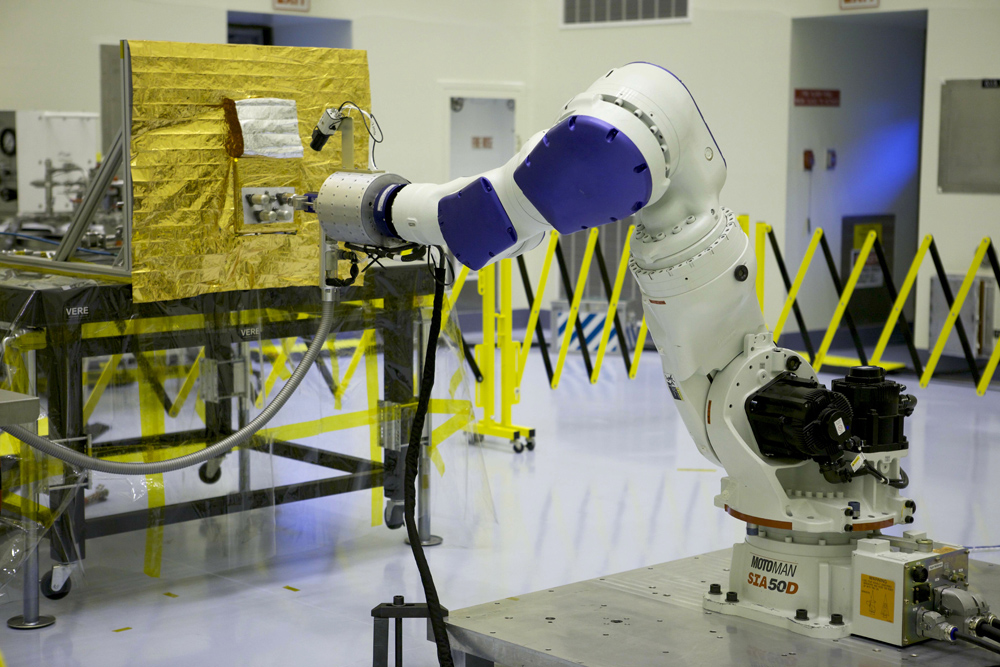NASA tests new robotic refueling technologies
March 10, 2014

A NASA industrial robot mimickshow future space robots could transfer oxidizer to a satellite valve (credit: NASA)
NASA has successfully concluded a remotely controlled test of new technologies that would empower future space robots to transfer hazardous oxidizer — a type of propellant — into the tanks of satellites in space today.
NASA is also incorporating results from this test and the Robotic Refueling Mission on the International Space Station to prepare for an upcoming ground-based test of a full-sized robotic servicer system that will perform tasks on a mock satellite.
Collectively, these efforts are part of an ongoing and aggressive technology development campaign to equip robots and humans with the tools and capabilities needed for spacecraft maintenance and repair, the assembly of large space telescopes, and extended human exploration.
The Satellite Servicing Capabilities Office (SSCO) at NASA’s Goddard Space Flight Center in Greenbelt, Md., checked another critical milestone off their list with the completion of their Remote Robotic Oxidizer Transfer Test (RROxiTT) in February 2014.
“This is the first time that anyone has tested this type of technology, and we’ve proven that it works. It’s ready for the next step to flight,” says Frank Cepollina, veteran leader of the five servicing missions to the Hubble Space Telescope and the associate director of SSCO.
“RROxiTT gives NASA, and the satellite community at large, confidence that advanced satellite refueling and maintenance technologies aren’t a wild dream of the future,” says Cepollina. “They’re being built and tested today — and the capabilities that they can unlock can become a reality.”
By developing robotic capabilities to repair and refuel GEO satellites, NASA hopes to add functional life to satellites and expand options for operators who face unexpected emergencies, tougher economic demands and aging fleets. NASA also hopes that these new technologies will help boost the commercial satellite-servicing industry that is rapidly gaining momentum.
Besides aiding the GEO satellite community, a capability to fix and relocate “ailing” satellites also could help mitigate the growing orbital debris problem that threatens continued space operations, ultimately making space greener and more sustainable.